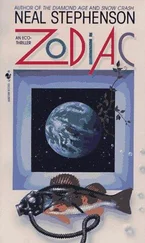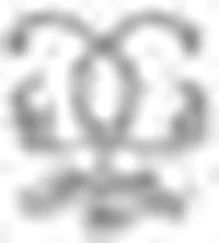It had not taken long for the other Eves to make similar calculations. As Arkies, picked in the Casting of Lots, Camila and Aïda were younger than the others, with two to three decades of fertility ahead of them. If they decided to become baby factories, and if they were lucky, each of them could conceivably bear as many as twenty children before menopause. Dinah, Ivy, Moira, and Tekla, all in their early thirties, might bear a few each. Roughly speaking, therefore, those four had as much combined childbearing power, if you wanted to think about it that way, as the younger pair of Camila and Aïda.
Julia, as she had pointed out, would be lucky to bear one child before menopause. And she had not needed Doob to explain the exponential math. The Julians were going to be swamped. They were going to be mere curiosities. People in the distant future, coming home from work, would exclaim to their partners, “You’ll never guess what I saw today — an honest to god Julian!”
Those were the mathematical rudiments of the new Great Game, and the roots of much of what had happened since then. The preponderance of later historical scholarship suggested that most of the Eves didn’t know that they were playing a game until they were a few years into it. Aïda, based on what she had said in her Curse, might have been the exception to that rule. But decisions made about one’s children were the most personal decisions that one could make, and no mother of sound mind would have admitted to herself, at the time, that she was playing a sort of game vis-à-vis the other mothers.
In a way it would have been simpler had they gone about it more cold-bloodedly.
Consciously or not, the Seven Eves sorted themselves into Four, Two, and One. The Four were Dinah, Ivy, Tekla, and Moira. The Two were Camila and Aïda. Arithmetic suggested that the descendants of the Four would be about as numerous as those of the Two. Existing friendships and affinities already linked the Four and created an unspoken compact, not articulated until they were long dead, to the effect that their children would embody complementary qualities. Dinans, in a sense, did not have to be complete humans as long as Ivyns were around to do some of the things they weren’t as good at. This was a blunt way of saying it, which was why it went unsaid for a long time, but hundreds of years later the descendants of the Four could look back and see that it had always been so. By that time it was so deeply ingrained in their DNA and their cultures that there was no going back.
The Two, by contrast, had no natural affinity with each other, and no existing relationship. Camila and Aïda had not met until shortly before the Council of the Seven Eves. All that they shared — and it wasn’t much to go on — was an aversion to Julia. Both of them had, at one point or another, fallen under Julia’s spell only to be disappointed by her. In Camila’s case the seduction had happened during a White House dinner. For her part, Aïda had been talked by Julia into joining the Swarm, only to end up leading the rebel faction that had deposed and mutilated her. Given the way that had all turned out, it was of course unlikely that Camila, or anyone of sound mind, would consciously align herself with Aïda. And yet the mathematics of the Four and the Two created a kind of gravity, invisibly drawing her that way. The breach that had opened between Camila and Dinah during the Council of the Seven Eves would not be forgotten.
Considered more calmly, Camila’s words had a persuasive power that couldn’t be denied. It simply was the case that their descendants would be living bottled up in confined spaces for many generations to come. As Luisa had demonstrated through her research, and as the people of the Cloud Ark had just finished proving in spectacular fashion, it wasn’t a good way for normal, unaltered humans to live. If the survival of the human race depended on rewiring their brains to make them better at such a lifestyle, then perhaps they had best get on with it.
In a way, that decision had been taken out of their hands by Camila, who had made her choice clear, and only needed to work out the details with Moira. She had, in effect, made the first clear move in the great genetic game. And contrary to her own stated principles it was, in a way, the most aggressive move possible: she had let them know that her descendants — who were likely to be quite numerous — would get along just fine in the conditions they would all be facing for the first ten, twenty, or hundred generations. The other six were left to follow her lead or to react against it.
Dinah, Ivy, and Tekla in essence reacted against it, with Moira eventually making another choice; but the historical fact was that Moira’s descendants had, more often than not, been part of the bloc of the Four.
Aïda had played the game more overtly. This had basically consisted of waiting the others out to see what they would do, and then making countermoves. The other Eves decided early, and stuck with those decisions. All of Dinah’s children — she ended up having five of them — were recognizably of a type. The same was true of Ivy’s three, and Tekla’s six. Julia only got to choose once. Camila’s sixteen offspring varied from one to the next, as she tinkered with her decisions based on behaviors she was observing among her first children. But she had never wavered from the general template that she had laid out during the Council of the Seven Eves.
Aïda’s seven children, however, were all different. Exactly what she was thinking was known only to Moira, the Keeper of Secrets, the Mother of Races. For the other Eves told Moira what they wanted in confidence, and she took those confidences to her grave. But it was plain enough — and in any event, it became the accepted version of history — that the first five children of Aïda had been conceived as reactions to what other Eves — all except Moira — were doing.
Aïda’s stance toward the others had been well articulated in the Curse. She knew that the other six Eves would always loathe her personally and that this feeling would inevitably be transferred to her offspring. Human nature being what it was, Dinan children, thousands of years from now, would be throwing rocks at Aïdan children on playgrounds and making jokes about cannibalism. They would never be assimilated into the society descended from the Four. Therefore, to the extent that Dinah was making choices about the virtues that her offspring would embody, and thereby making a move in the game, Aïda sought a countermove. Which might consist of conceiving a child that would be like Dinah’s, except more so. Or of inventing an anti-Dinan, a type of human uniquely suited to exploiting the weaknesses in the Dinan type.
Thus the first five children of Aïda. She had, however, been unable to employ the same strategy vis-à-vis Moira, for the basic reason that Moira knew exactly what Aïda was doing, down to the specific DNA base pairs that had been altered in her ova. If this were a game, then Eve Moira always had the last move. The failures of her first eight pregnancies had only deepened the mystery. Since she had never articulated her choice, no one really knew what she had done, which made Moirans an enigmatic race, not only to the other races, but to themselves. But it was plainly the case that Moirans were the only race capable of “going epi.” Kath Two’s genome, like that of every other life-form, was fixed. A copy of it lived in every cell in her body. But which of those genes were being expressed at a given time, and which were lying dormant, was changeable to a degree far beyond what humans were normally capable of. It would have amounted to a kind of superpower, had there been a way to control it. But, certain hoary old legends to the contrary, there wasn’t. Kath Two never knew when she might fall asleep for a week and wake up a different person named Kath Three. Sometimes the results were brilliant. Rarely they were fatal. Sometimes they were inconvenient, or downright embarrassing. Most of the latter cases had something to do with what happened, like it or not, when a Moiran fell in love. In any case, this was the choice that Eve Moira had made and the gift she had conferred on her daughter, Cantabrigia. And it was assumed that she had done so because she believed that this degree of plasticity would somehow bring the world back into balance against the choices that Aïda had been making.
Читать дальше
Конец ознакомительного отрывка
Купить книгу





